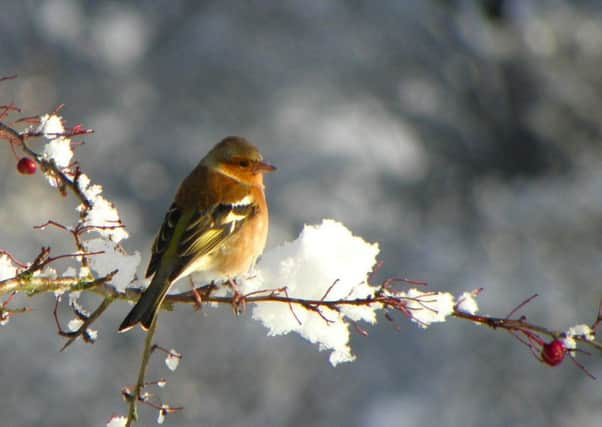Are we killing the birds with kindness?


At the time of writing however, the snow is back and my garden bird feeders are a hive of activity.
I know most of us love feeding the birds, but an e-mail I had from Galshiels reader B.S. last week, made me wonder if we were actually killing them with kindness.
Advertisement
Hide AdAdvertisement
Hide AdHe told me: “I do the weekly garden bird count for BTO’s garden bird watch and recently e-mailed them about sickness/deaths I was seeing in ‘my’ birds over the past 12 months.
“I have been seeing chaffinches showing typical symptoms of trichomonosis almost every month with fatalities occurring regularly.”
They asked him to send a dead bird showing the symptoms, so that they could determine the precise cause of death and this he did, sending them a chaffinch.
The results came back confirming that trichomonosis was the cause, so it is here in the Borders.
Advertisement
Hide AdAdvertisement
Hide AdGarden feeding stations, if not cleaned regularly, are ideal places for the disease to spread from one bird to another. The symptoms to look out for are - lethargy and fluffed-up plumage, affected birds may drool saliva, regurgitate food, have difficulty in swallowing or show laboured breathing.
Finches are frequently seen to have matted wet plumage around the face and beak. In some cases, swelling of the neck may be visible from a distance. The disease may progress over several days or even weeks, consequently affected birds are often very thin or emaciated. The disease cannot be transferred to humans or pets but if you see birds showing any of the above symptoms, there are several things you can do to avoid the disease spreading.
*Ensure optimal hygiene at garden bird feeding stations, including disinfection
*Consider leaving bird baths empty until no deaths occur. Otherwise, be particularly vigilant to provide clean drinking water on a daily basis. Empty and dry the bird bath on a daily basis (drying kills the Trichomonas organism).
Advertisement
Hide AdAdvertisement
Hide Ad*If many birds in your garden are affected, it is recommended that you consider significantly reducing the amount you feed, or stop feeding for a period (two to four weeks). The reason for this is to encourage birds to disperse, thereby minimising the chances of new birds becoming infected at the feeding station. Gradually reintroduce feeding, whilst continuing to monitor for further signs of ill health.
I hope that not many of you are seeing this horrible disease in your garden birds, but there is more information available by getting the factsheet at www.gardenwildlifehealth.org/disease-factsheets.